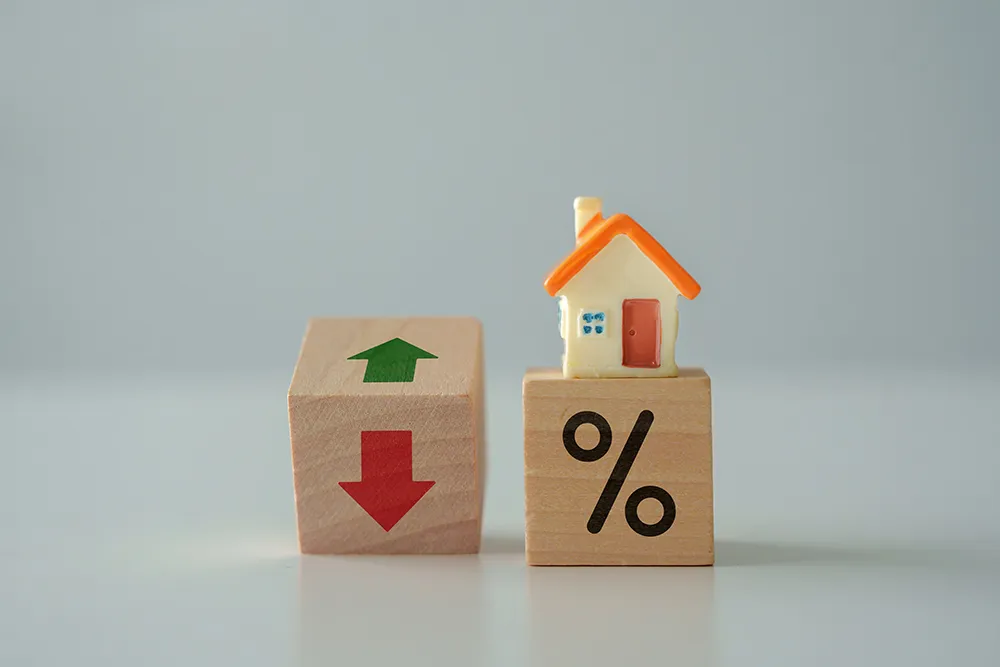
The Bank of England began a series of 14 consecutive base rate rises two years ago this week, in a move that has shaken borrowers and the mortgage industry alike.
In that period the base rate lifted from a historic low of 0.1% in December 2021 to currently stand at 5.25%.
That has seen the average two-year fixed-rate home loan rise to 6.04% from 2.34% and an average five-year fix lift to 5.65% from 2.64%, adding hundreds of pounds to monthly payments, data from Moneyfacts shows.
The data firm adds that a 10-year fix has risen to 5.96% from 2.97% in that period, while the average standard variable rate stands at 8.19%, from 4.40%.
Hargreaves Lansdown head of personal finance Sarah Coles says: “We’ve seen nosebleed-inducing ups and downs in the mortgage market over the past two years.
“They started at incredible lows, with most people on fixed-rate mortgages having fixed below 2%.
“Unsurprisingly, mortgage rates responded more quickly to rate rises than savings, but they were still relatively sluggish in the early days.
“However, the impact of the mini-Budget was devastating for the mortgage market, with vast swathes of the fixed rate market withdrawn entirely while chaos reigned in the swaps market.
“When they returned, they were at a much higher level, with the average two-year rate hitting a peak of 6.65% on 20 October, according to Moneyfacts.
“They then fell back until the spring, as the market realised it may have overegged its rate expectations, and started to factor fewer in.
Coles points out: “It was all change again at that point, when inflation was proving surprisingly sticky, so lenders started to price in more rises again.
“Moneyfacts data shows that the average two-year fixed rate mortgage rose from 5.35% at the beginning of April to a recent peak of 6.85% at the start of August.
“As a result, Bank of England figures show a big drop in mortgage approvals. As buyers hurried out of the market, prices fell.
“Mortgage rates have dropped gradually since, with the average five-year rate falling below 6%, and the average two-year rate threatening to do so.
“However, we’re still worlds away from where rates were before all this kicked off, and there’s no expectation for us to get back there again in a hurry.”
Moneyfacts finance expert Rachel Springall agrees that a combination of volatile mortgage prices and the cost-of-living crisis have set markets on their head.
Springall says: “The past two years have proven to be an unprecedented period of interest rate volatility for mortgages.
“Those coming off a fixed rate deal and wishing to fix once more will likely have to cover a much higher mortgage repayment, with the average two-year fixed rate more than double what it was in December 2021.
“The lingering cost of living crisis could also be playing havoc with first-time buyers’ ability to get a foot on the property ladder, and affordable housing remains in short supply.
“Borrowers feeling the squeeze would be wise to seek help before they fall behind on their repayments and lenders will need to work closely with customers to support them moving into 2024.
She adds: “Borrowers hoping to lock into a fixed rate mortgage for peace of mind may be sitting on the fence as they wait for rates to fall further in the weeks ahead.
“However, any significant rate cut activity would typically be linked to a volatile swap rate market. The past few months have shown positive signs for mortgage pricing, so it is hoped that the fixed rate cut momentum continues into 2024.”



